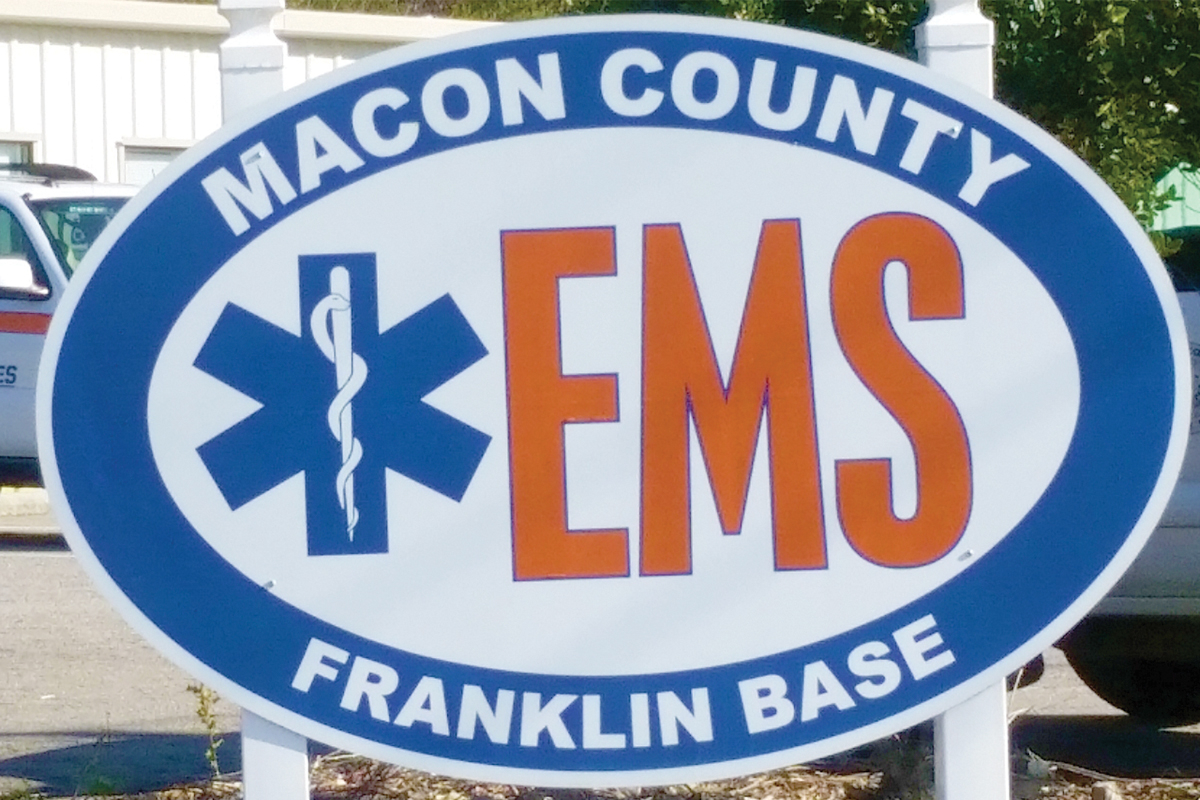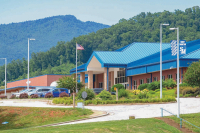The state of emergency services: Macon’s EMS Director highlights transport and staffing concerns
 Macon County EMS photo
Macon County EMS photo
Macon County Emergency Services Director Warren Cabe came before the Board of Commissioners this month to outline problems his department is having with staffing and interfacility transportation.
While several counties in the region are facing similar issues, Macon County’s rural landscape makes the problem particularly acute.
“I wanted to bring something to your attention; there are some issues that are affecting EMS, not just in our county, but in the region,” said Cabe. “I want to explain what’s going on, what I know about it and how it’s affecting us.”
Earlier this month, McDowell County put a moratorium on interfacility, non-emergency transports from McDowell to Mission Hospital in Asheville. The moratorium is a 45-day pause. In a letter to HCA leadership Oct. 30, Emergency Services Director Will Kehler highlighted increasing patient offload times, also known as receiving times. Paramedics must continue providing care until the hospital takes charge of a patient, and these days that transfer time, which generally takes 20 to 30 minutes, can last hours.
Similarly, Buncombe County recently informed Mission Hospital that it would implement a new policy that allows EMS workers to leave stable patients in the care of hospital staff even if a bed is not ready for the patient. In a Nov. 3 letter, the county informed Mission Hospital it would implement the policy by Dec. 15 unless the hospital could fix the problem.
“Receiving time is the time from when one of my trucks gets to a facility, like a hospital, until patient care is actually transferred to another provider. They’re off our bed, they’re in another bed, they’re accepted by somebody, and that care is actually moved,” said Cabe. “We’re not immune to that. We have had some issues with that, but our issues have not been nearly as severe.”
Related Items
During the month of October, the average receiving time for Macon County EMS was 4.84 minutes from the time a truck gets to the facility until care is transferred. This includes Mission Hospital, as well as any other facilities where Macon EMS is taking patients.
“Now obviously, we’re going to look different because Buncombe County, for instance, they’re taking all their patients to Mission, we’re only taking critical patients to Mission,” said Cabe.
However, there was one outlier during the month of October, a call with a receiving time of 125 minutes at Mission Hospital. That means a Macon County ambulance sat at Mission Hospital waiting for care to be transferred for over two hours. What would be a three-hour round trip for that truck to get from Macon County to Mission and back, turned into a five-hour trip. Any time Macon EMS has to take someone to Mission, the county is down one truck and several EMS workers to cover the rest of the county.
During the month of September, Macon County EMS had nine calls with receiving times of about 30 minutes, and one call with a receiving time of 70 minutes.
“Ten, 15, 20 minutes, if I’m moving a lot of complicated stuff over, probably not a big deal … When we get to 30, that concerns me a little,” said Cabe. “So I wanted to bring that to your attention because I’m sure someone is going to ask, ‘are we having the same issues here?’ And we are, occasionally, but it’s not to the same level that some of these other services are at.”
On any given day, there are five ambulances servicing Macon County. Three in Franklin, one in Highlands and one in Nantahala. According to Cabe, the bare minimum the county can operate to serve 911 customers is four trucks — two in Franklin, one in Highlands and one in Nantahala.
“So one trip to Mission, one trip to Atlanta, we’re down to our minimums,” said Cabe. “The longer that truck is out of town and out of pocket, that puts us at risk of not being able to meet our chute times — the time [it takes] me to come to you as a 911 customer.”
According to Cabe, the industry standard is that for 90% of 911 calls, there is a truck immediately ready to pull out the front door and answer that call. Cabe said he has to be very careful not to interfere with that standard.
“We have actually declined some transfers, out-of-town transfers to some of our facilities for non-emergency transports,” said Cabe. “Occasionally, we have been declining some of those because we’ve been short of resources, or we know that the timeframe somewhere is going to put us short here with our 911 calls …. Our primary responsibility is 911. That is our primary customer base. We are the only option for those folks to call for us to come.”
Calls for emergency service in Macon County rose by about 11% from 2019 to 2022. Currently, the county is short six staff members, or about 12% of full-time staff. The EMS department has four people going through orientation, one of which is interested in a full-time career.
“It’s not just us, it’s EMS systems across the area and that’s part of the reason we’re here,” said Cabe.
Regional Transport — which is the biggest transport system out of Mission Hospital and whose only business is doing interfacility transfers — doesn’t operate a truck out of Franklin anymore due to staffing issues.
Despite the problems the department is facing, Cabe is optimistic. In October, the average response time from the moment someone dialed 911 until the ambulance and EMS workers were pulling out, was 2.28 minutes. However, there were two calls that had response times of 10 minutes and one with a response time of 26 minutes. While 10 or 20 minutes may not sound like a lot, Cabe noted how large Macon County is. If EMS is servicing people in Mulberry or Telico or Ledford Branch, they’ve got up to a 25-minute drive to get to those people, on top of whatever time it took to respond to the call.
On its last payroll, EMS had 27 people on its part-time lists. However, several of those are retired and others have a second job. Of those 27 part-time employees, 15 worked the last pay period and the department still had to use full-time staff to cover shifts.
Even while Cabe made his presentation to commissioners during their Nov. 14 meeting, EMS was short on staff.
“From about 5:30 tonight until 10 o’clock, we’re down to two trucks in Franklin because of staffing. That gives us four to manage the system,” said Cabe.
Where this hurts the county is, if one truck leaves the city limits of Highlands, to go down to Blue Valley or Horse Cove, EMS has to float a truck from Franklin to Highlands to cover downtown Highlands.
“If something happens up there, we can’t get there from [Franklin] quickly,” said Cabe.
The same process happens when a truck has to be transported out of Nantahala.
“I’m not telling you the system is broken. We’ve had some issues. We’re seeing some of the same issues that these other counties are having, some of it for a little different reason,” said Cabe. “I’ve been doing this for a long time and I don’t know, I’m not sure where we’re going to come out of this.”
The department is currently working on a new ad campaign with NC Works to try and recruit new employees. They are also working with the school system to recruit out of the career and technical education programs. Additionally, the department is in the position to make contingent offers to potential employees who are willing to go through the educational requirements.
“Years ago, when I first started, that didn’t happen,” said Cabe. “You waited until somebody retired or something until you got a job and that’s not the case anymore.”









